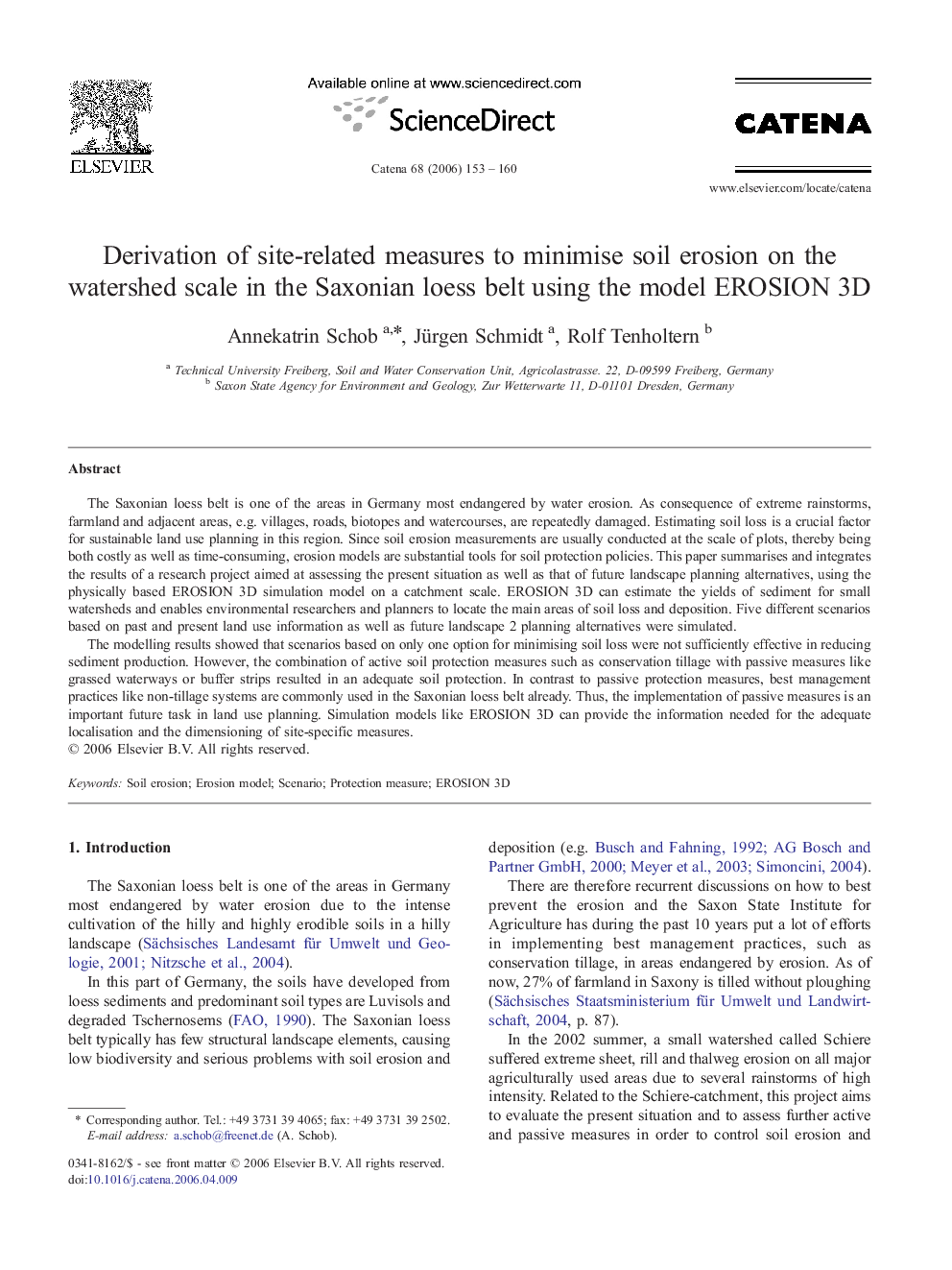| Article ID | Journal | Published Year | Pages | File Type |
|---|---|---|---|---|
| 4572666 | CATENA | 2006 | 8 Pages |
The Saxonian loess belt is one of the areas in Germany most endangered by water erosion. As consequence of extreme rainstorms, farmland and adjacent areas, e.g. villages, roads, biotopes and watercourses, are repeatedly damaged. Estimating soil loss is a crucial factor for sustainable land use planning in this region. Since soil erosion measurements are usually conducted at the scale of plots, thereby being both costly as well as time-consuming, erosion models are substantial tools for soil protection policies. This paper summarises and integrates the results of a research project aimed at assessing the present situation as well as that of future landscape planning alternatives, using the physically based EROSION 3D simulation model on a catchment scale. EROSION 3D can estimate the yields of sediment for small watersheds and enables environmental researchers and planners to locate the main areas of soil loss and deposition. Five different scenarios based on past and present land use information as well as future landscape 2 planning alternatives were simulated.The modelling results showed that scenarios based on only one option for minimising soil loss were not sufficiently effective in reducing sediment production. However, the combination of active soil protection measures such as conservation tillage with passive measures like grassed waterways or buffer strips resulted in an adequate soil protection. In contrast to passive protection measures, best management practices like non-tillage systems are commonly used in the Saxonian loess belt already. Thus, the implementation of passive measures is an important future task in land use planning. Simulation models like EROSION 3D can provide the information needed for the adequate localisation and the dimensioning of site-specific measures.
